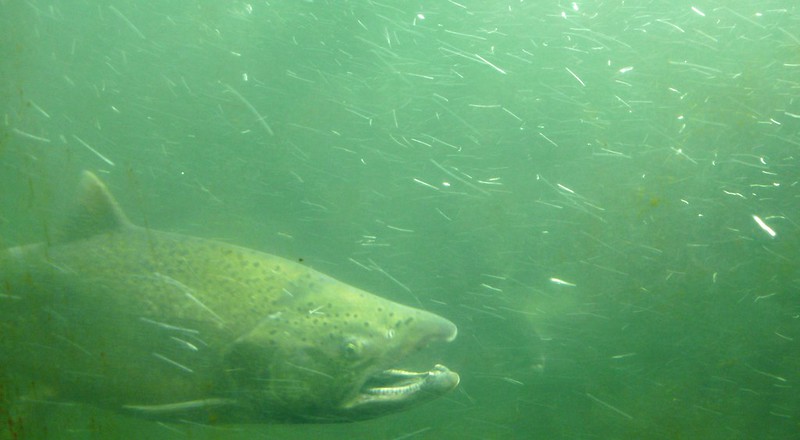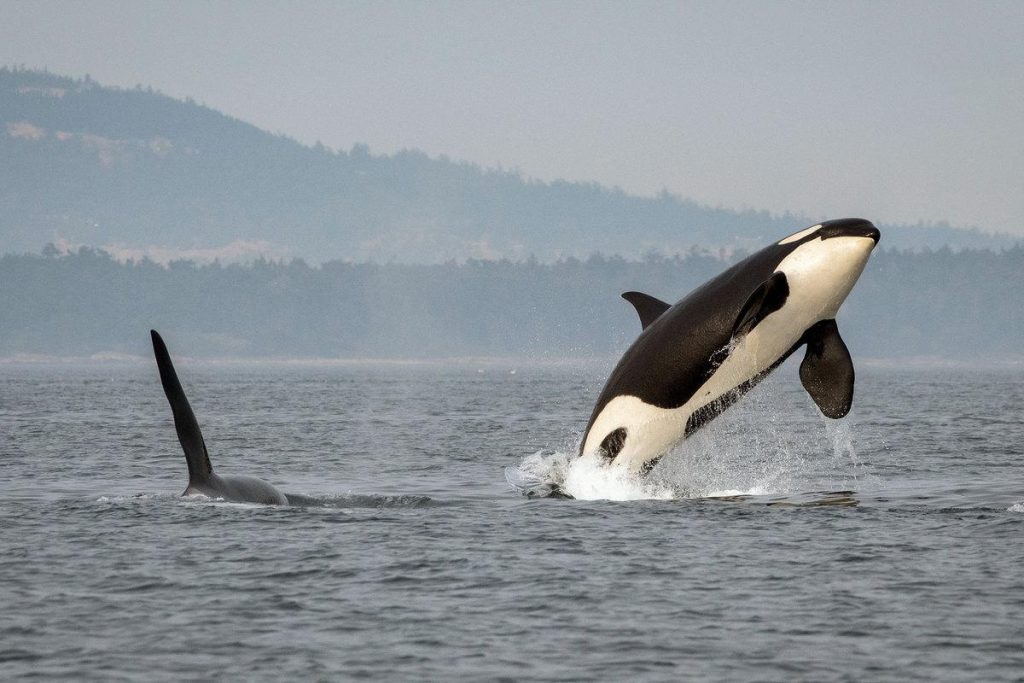NMFS Opens Comment On Chinook Low Abundance Threshold Measures For Orcas
THE FOLLOWING IS A PRESS RELEASE FROM THE NATIONAL MARINE FISHERIES SERVICE
NOAA Fisheries is asking for public input on a Pacific Fishery Management Council recommendation to reduce impacts from fishing off the West Coast. The recommendation would be implemented if salmon numbers fall too low to provide enough prey for the 75 endangered Southern Resident killer whales.
NOAA Fisheries is proposing to adopt the Council’s recommendation, and conducted a consultation under the Endangered Species Act. This consultation ensured that the amended fisheries management plan does not jeopardize the continued existence of threatened or endangered species, or negatively impact designated critical habitat. It incorporated recent research that revealed new details of when and where the whales forage, and their preferred prey.

The Council created a workgroup of representatives from West Coast states, tribes, and NOAA Fisheries to examine the issue. The workgroup completed a risk assessment evaluating the impact of fisheries on West Coast Chinook salmon abundance and, in turn, on the Southern Residents, and developed recommendations.
Late last year the Council adopted the workgroup’s suggestions. They included limiting commercial and recreational fishing in certain places off California, Oregon, and Washington when estimated Chinook salmon numbers north of Cape Falcon, Oregon, fall below a certain level of abundance.
The workgroup recommended that level be set as the average of the seven lowest years of forecast salmon abundance off the northern Oregon and Washington coasts. This average is currently estimated at 966,000. Chinook numbers have remained above that level in recent years; 2007 was the last year when forecasts would have fallen below the threshold.
Public Comments Inform Decision
This week the Council officially sent the recommendation to NOAA Fisheries. NOAA Fisheries is opening a public comment period on the proposed changes, referred to as Amendment 21 to the Pacific Coast Salmon Fishery Management Plan. Comments are due by August 2.
The workgroup told the Council that years when Chinook salmon abundance is low could represent increased risk to the whales. The whales may be unable to find sufficient prey to maintain their energy stores, leading to declines in their health, reproduction, and survival. The goal of the proposal is to reduce impacts on Chinook salmon fisheries that meet the prey needs of Southern Resident killer whales when prey abundance is low, while still providing fishing opportunities.
NOAA Fisheries completed a consultation under the Endangered Species Act on the proposed changes. We determined that they would not jeopardize the continued existence of the endangered whales, or adversely modify their designated critical habitat. In 2019, NOAA Fisheries proposed to expand the critical habitat, which explicitly includes sufficient prey for their growth and development as an essential feature.
Two of the three pods of Southern Resident killer whales spend much of the winter and spring foraging for multiple runs of salmon and other species off the West Coast. They are found as far south as Monterey Bay, California, and as far north as Southeast Alaska. The third pod forages more in inland waters and farther north in Candian waters and also relies on a mix of salmon stocks from West Coast rivers.
Fishing measures that would take effect if Chinook salmon numbers fall below the low abundance threshold include:
- Reduce fishing quotas north of Cape Falcon, Oregon
- Close areas off the Columbia River and Grays Harbor to all but tribal treaty fishing until June 15
- Delay the ocean commercial troll fishery between Cape Falcon and the California/Oregon border until April 1
- Close areas off the Klamath River and Monterey Bay in California to recreational and commercial Chinook salmon fishing from October 1 to March 31
The Council also plans to reconsider established conservation objectives for Sacramento and Klamath River fall-run Chinook salmon. Both populations contribute substantially to West Coast salmon fisheries. That could eventually lead to higher goals for salmon returns that could benefit the endangered Southern Residents and the fishing fleet.

Whales Diversify Diet When Necessary
Research has found that the Southern Residents favor Chinook salmon as prey. When fewer Chinook are available, the whales diversify their diets with other salmon, steelhead, and groundfish such as halibut. However, Chinook salmon are more energy rich and Southern Residents can meet their caloric needs more efficiently by consuming Chinook salmon.
The recommendation for the abundance threshold to trigger fishery management measures is only one of many actions underway to help support and recover the endangered killer whales. Federal funding for implementing the Pacific Salmon Treaty, and state funding provided by the Washington State legislature, has supported increased production of hatchery Chinook salmon smolts in Washington and Oregon to increase prey availability for the whales. The funding for Pacific Salmon Treaty implementation has also supported nearly $21 million in habitat protection and restoration projects targeting critical Chinook salmon populations in Puget Sound.
Additional investments in habitat restoration through state, tribal and federal partnerships continue to be supported by the Pacific Coastal Salmon Recovery Fund. In addition, agencies such as the U.S. Army Corps of Engineers have taken steps to improve fish passage and survival at projects around Puget Sound such as Mud Mountain Dam east of Tacoma. Furthermore, last year NOAA Fisheries helped fund the removal of a diversion dam that blocked salmon from spawning in the upper reaches of the Middle Fork of the Nooksack River near Bellingham. The Nooksack project was a top priority for restoring threatened Puget Sound Chinook salmon. They are a key Chinook stock that is particularly important in providing prey for the Southern Resident killer whales.
Following the public comment period, NOAA Fisheries must decide within 30 days whether to approve the threshold for salmon abundance and accompanying fishery restrictions.

